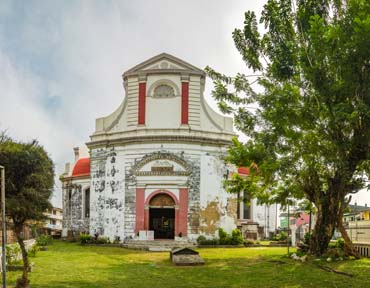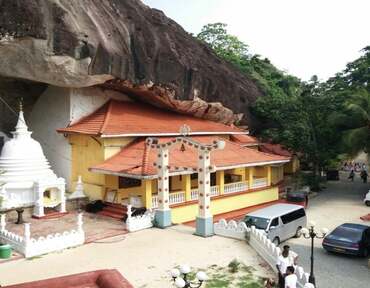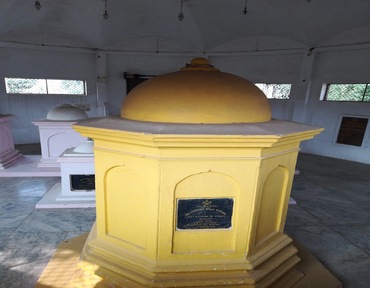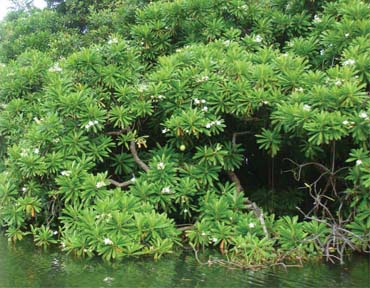


Wolvendaal Church (Wolvendaalse Kerk) is a remarkable Dutch Colonial-era building located in the Pettah neighborhood of Colombo. In 1736, Governor Gustaaf Willem van Imhoff sought approval from the Dutch East India Company (VOC) to demolish the existing church (Kasteel Kerk) within Colombo Fort and construct a new one on the same site. The VOC initially refused, but Governor Julius Valentyn Stein van Gollenesse resolved the impasse. The new church was erected beyond the city walls in an area known as Wolvendaal (Wolf's Dale or Wolf's Valley). The site was chosen for its commanding views across the town, proximity to the entrance, and historical significance. Constructed in the Doric style, the church forms a Greek cross with walls nearly 1.5 meters (five feet) thick. It is made of large kabok (clay ironstone) mixed with coral and lime plaster. The high roof resembles a dome and was originally arched with brick, covered in blue Bangor slate roof tiles. Atop the dome stood a brazen lion symbolizing the seven united provinces of the Dutch Republic. Unfortunately, in 1856, lightning destroyed the lion and damaged the dome. Completed on March 6, 1757, the Wolvendaal Church remains one of the oldest Protestant churches still in use in Sri Lanka.

Ancient geographical milestones ate the most veritable sources of historical knowledge and wonders of Sri Lanka. Amongst such milestones, the Maniyagama Rajamaha Viharaya holds an immeasurable amount of artistic, architectural, historical and geographical value. In the historical folklore the Maniyagama was a linking junction of ancient Anuradhapura Kingdom and the Western region of Sri Lanka, and even the geographical deposition aside, the Maniyagama Rajamaha Viharaya itself is the most significant in its inception by King Valagamba and the later years the renovation by King Keerthi Sri Rajasinghe. Historically it played a pivotal role in not just as slinking road junction, but also as a strategic military stronghold, proven by the role this destination played in the battles between Seethawaka and Kotte Kingdoms as well as the Kingdoms resistance against Portuguese. Above all these historical values, the natural and Environmental features of the destination had added breathtaking attraction via curved roads, forest ceilings, outside and out of reach from unending urbanization, thus maintaining the nature value bestowed on the land to great extent. The architectural designs only added more prominent features to the land giving the mysterious quality people seek in a destination that has been a central point of many wars in the past. The Kandyan style roofing, long verandas, granite pillars, the makara thorana, the mural arts, ceiling, walls and shrine arts given the place exterior ambience that suitable for the destination.

Tomb of King Sitawaka Rajasinghe (සීතාවක පලමුවන රාජසිංහ සොහොන) is a historical site located on the Avissawella-Amithrigala road, close to the main road. King Rajasinghe I was a significant figure in Sri Lanka's history; Born as Tikiri Bandara, he led several battles against his brother-in-law, Veediye Bandara, ultimately earning the title Rajasinghe, the Lion King. One of his notable achievements was the “Bloody battle of Mulleriyawa” against the Portuguese army. Despite being equipped with more advanced firepower, the Portuguese were defeated by the Sinhalese army using their ancient fighting method called “Angam Pora”. The vast paddy field in Mulleriyawa reportedly turned red with the blood of the fallen Portuguese soldiers. Unfortunately, discontent among the Buddhist public and prelates contributed to the downfall of the Seethawaka kingdom. King Rajasinghe razed many Buddhist religious sites under the advice of his chief adviser, Aritta Kivendu, who converted to Hinduism. His last battle was with Konappu Bandara, who aimed to free the Kandyan Kingdom from Seethawaka. At the decisive battle at Balana, Rajasinghe's troops suffered defeat, and he retreated to the royal park at Pethangoda. Legend has it that he was struck by a fatal bamboo splinter in the foot, although this story remains subject to debate.

An important attraction open to visitors in the Gmpaha District includes the Muthurajawela Marshland, which is part of a 6,000-hectare (14,826-acre) reserve. The protected mangroves of the lagoon are home to over 190 species of wildlife